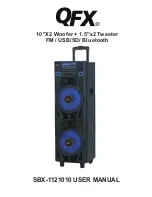
3. TROUBLE SHOOTING
3-1 Check
of
ROM
&
NMOS-RAM - No calls on the system.
1. Put the 4 "LINK SELECT" switches of the HCU upward (Link No. 15 SELECT) and switch on the AC
power of the exchange.
2. If there is no error, the indication lamps will not light.
3. In
the
event
of
a
memory error, the lamps may light as shown in the example of Fig. 1.
4. The
error
indications
will
remain
on
until
you
use
Link
No.
15
for
communications.
Error ROM • RAM Chip No.
Example
No.1 and No.2 out of 5 pcs
ROMs (2716) have "read"
error.
No.0 and No.1 out of 4 sets
of N-MOS RAMs (2114) have
"read" error.
(One set of RAMs consist of
2 ICs)
Indicate memory error.
LINK SELECT Switches set
to select No. 15
Fig. 1
3-2 Check
of
CMOS-RAM (Programmed data memory)
At the time of initial programming and registration using station No. 200,
1. You hear calling tone instead of confirmation tone, if there is CMOS memory error when registering single
digit number or personal number.
2. Indication
on
front
panel of the CPU.
"RUN" LED indicator
When the system is working normally, LED is "on".
Check its condition when the system fails to work normally.
"SELF RESTART" LED indicator
This does not light when the system is working normally. Even if the high noise from the outside of the exchange
causes the CPU to work abnormally, the CPU "self-restarts" and the system keeps on working normally. Once
the CPU "self-restarts", the LED indicator is on, but it does not affect system. If you again cycle
the AC power
source, the LED indicator is turned off.
- 8 -
Содержание CPU-55
Страница 50: ...TOAELECTRICCO LTD Printed in Japan...









































